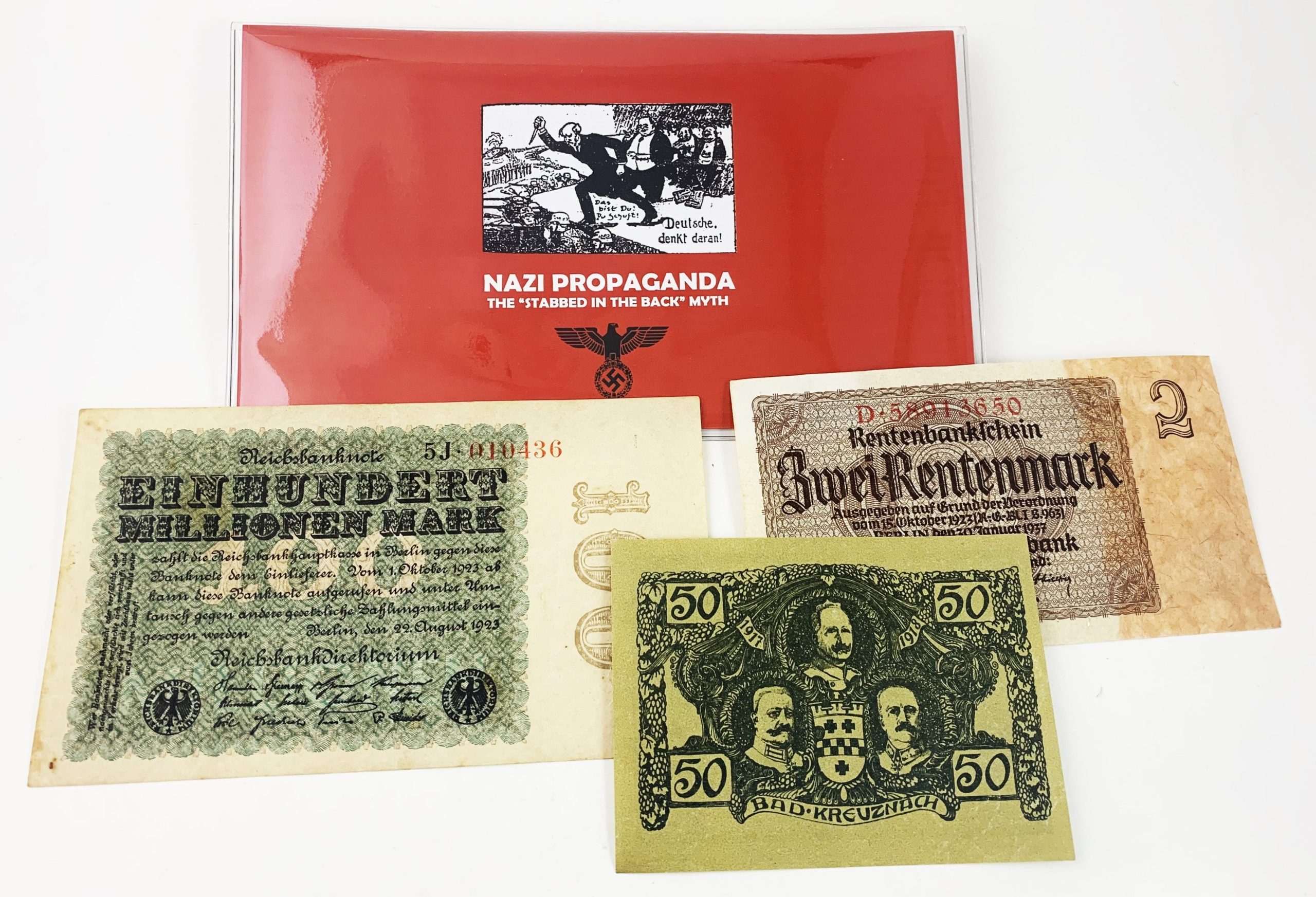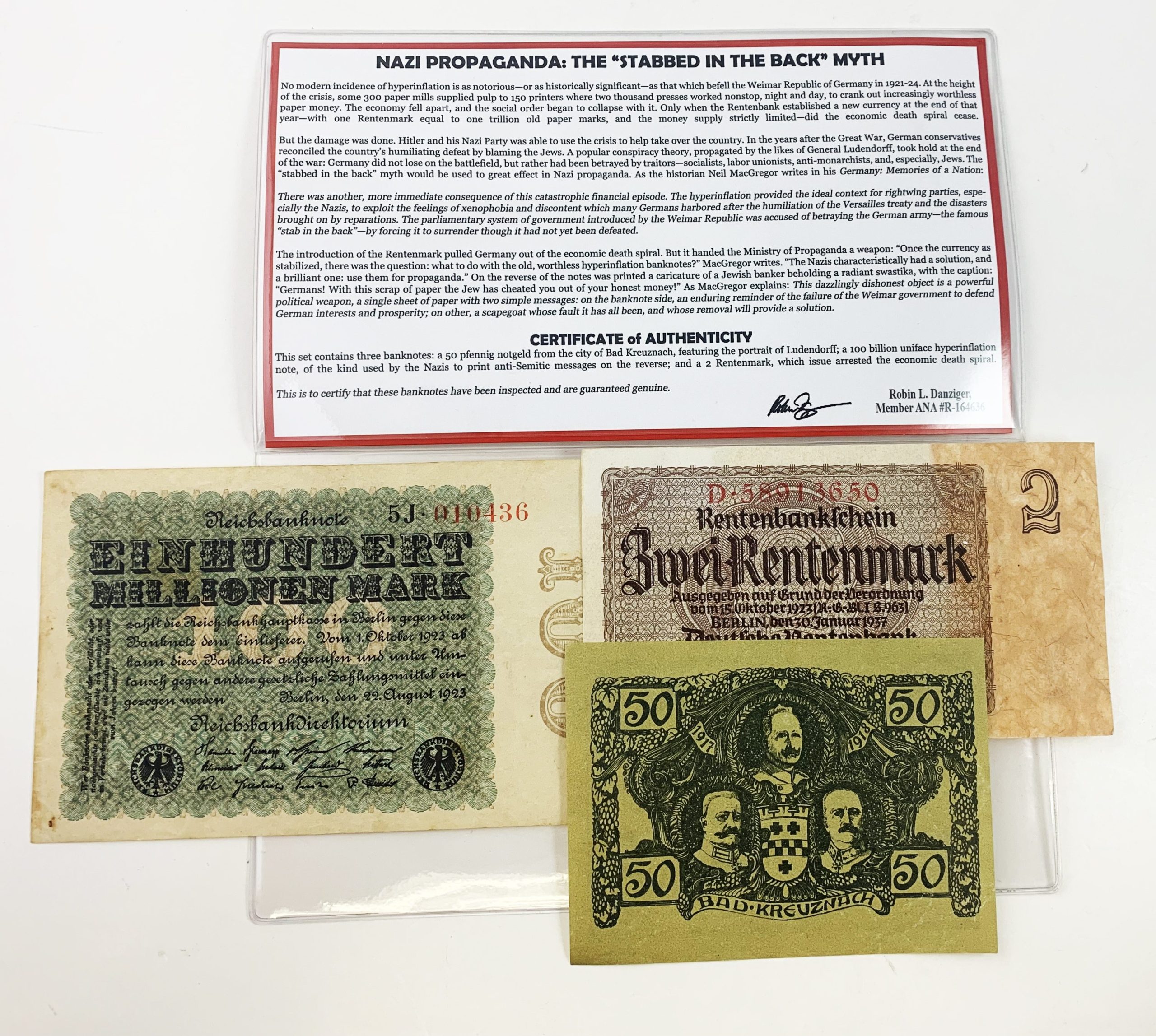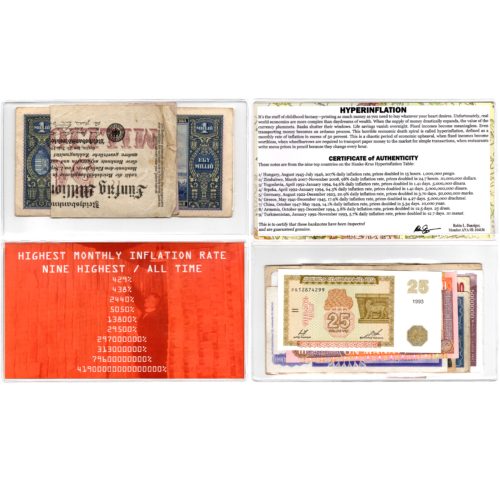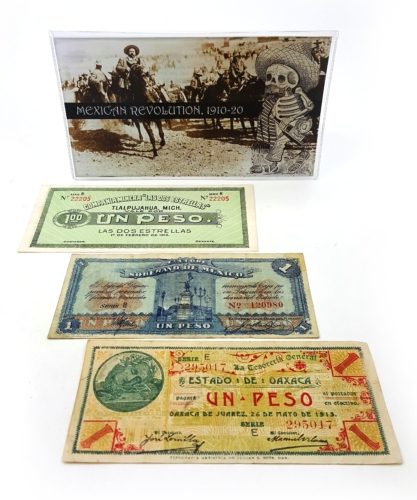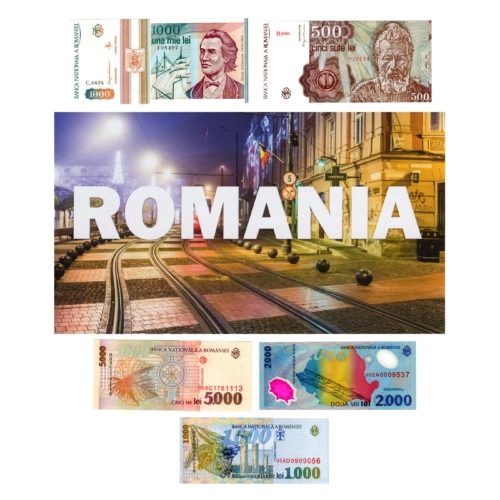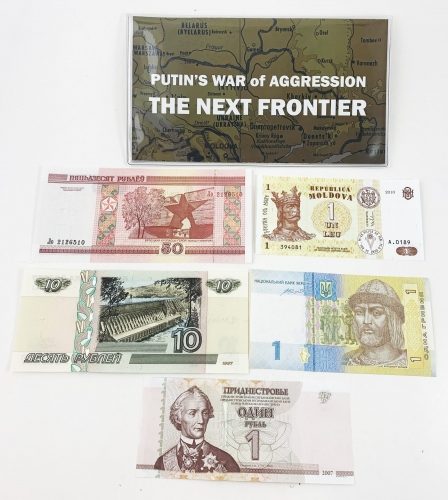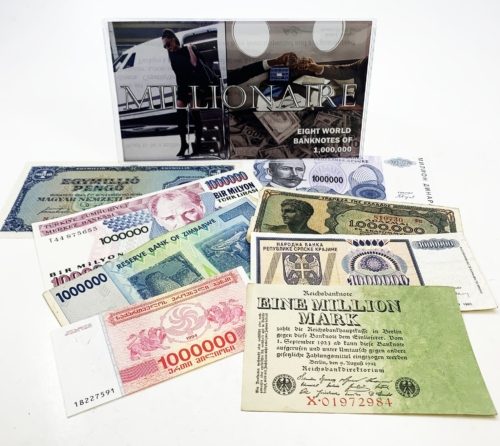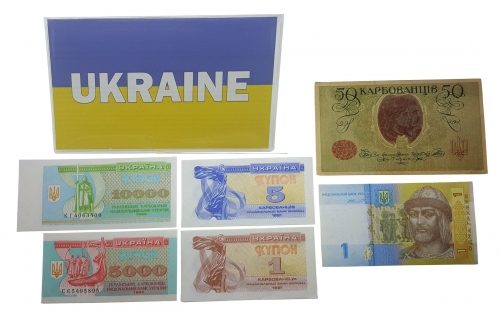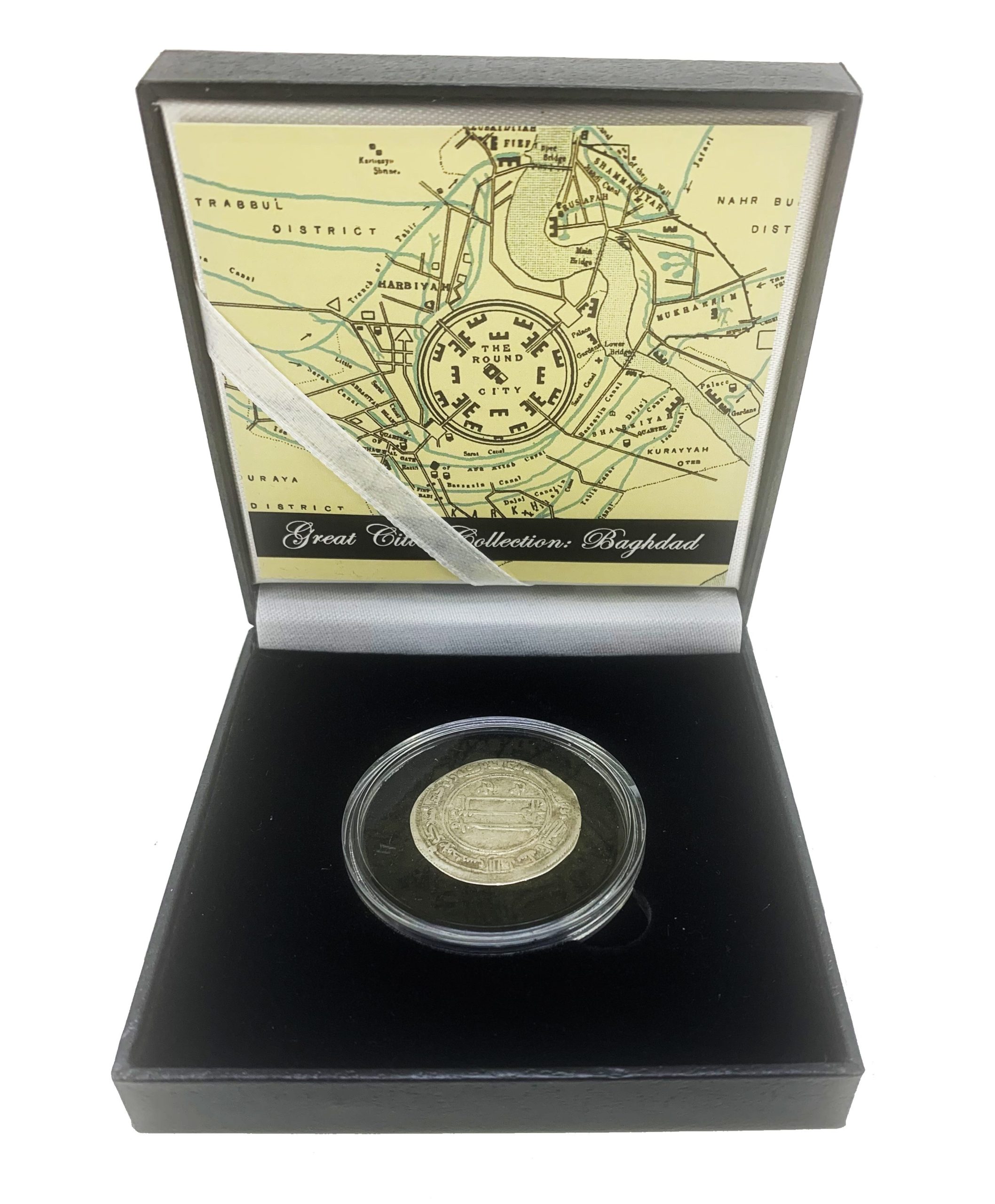Description
No modern incidence of hyperinflation is as notorious—or as historically significant—as that which befell the Weimar Republic of Germany in 1921-24. At the height of the crisis, some 300 paper mills supplied pulp to 150 printers where two thousand presses worked nonstop, night and day, to crank out increasingly worthless paper money. The economy fell apart, and the social order began to collapse with it. Only when the Rentenbank established a new currency at the end of that year—with one Rentenmark equal to one trillion old paper marks, and the money supply strictly limited—did the economic death spiral cease.
But the damage was done. Hitler and his Nazi Party was able to use the crisis to help take over the country. In the years after the Great War, German conservatives reconciled the country’s humiliating defeat by blaming the Jews. A popular conspiracy theory, propagated by the likes of General Ludendorff, took hold at the end of the war: Germany did not lose on the battlefield, but rather had been betrayed by traitors—socialists, labor unionists, anti-monarchists, and, especially, Jews. The ”stabbed in the back“ myth would be used to great effect in Nazi propaganda. As the historian Neil MacGregor writes in his Germany: Memories of a Nation:
There was another, more immediate consequence of this catastrophic financial episode. The hyperinflation provided the ideal context for rightwing parties, especially the Nazis, to exploit the feelings of xenophobia and discontent which many Germans harbored after the humiliation of the Versailles treaty and the disasters brought on by reparations. The parliamentary system of government introduced by the Weimar Republic was accused of betraying the German army—the famous
”stab in the back“—by forcing it to surrender though it had not yet been defeated.
The introduction of the Rentenmark pulled Germany out of the economic death spiral. But it handed the Ministry of Propaganda a weapon: ”Once the currency as stabilized, there was the question: what to do with the old, worthless hyperinflation banknotes?“ MacGregor writes. ”The Nazis characteristically had a solution, and a brilliant one: use them for propaganda.“ On the reverse of the notes was printed a caricature of a Jewish banker beholding a radiant swastika, with the caption: ”Germans! With this scrap of paper the Jew has cheated you out of your honest money!“ As MacGregor explains: This dazzlingly dishonest object is a powerful
political weapon, a single sheet of paper with two simple messages: on the banknote side, an enduring reminder of the failure of the Weimar government to defend
German interests and prosperity; on other, a scapegoat whose fault it has all been, and whose removal will provide a solution.
CERTIFICATE of AUTHENTICITY
This set contains three banknotes: a 50 pfennig notgeld from the city of Bad Kreuznach, featuring the portrait of Ludendorff; a 100 billion uniface hyperinflation note, of the kind used by the Nazis to print anti-Semitic messages on the reverse; and a 2 Rentenmark, which issue arrested the economic death spiral.

